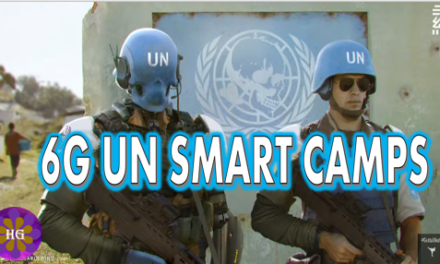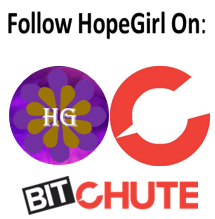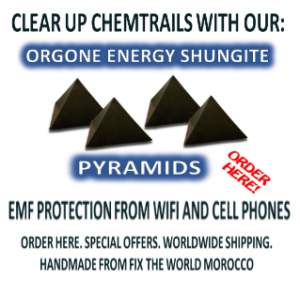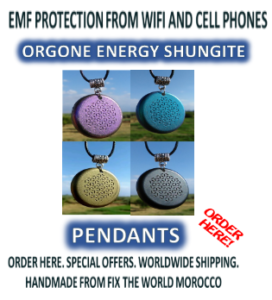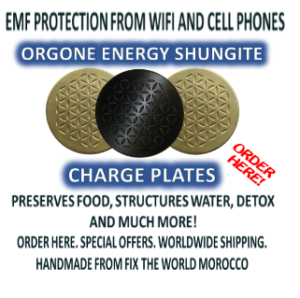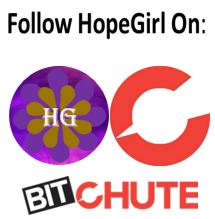In 2015 the US Food and Drug Administration (“FDA”) issued guidance on how to conduct shedding studies during the preclinical and clinical development of virus or bacteria-based gene therapy products. Shedding, as described by the FDA, is the excretion or release of a product from a vaccinated person’s body. The shed gene therapy product may be infectious and so raises safety concerns “related to the risk of transmission to untreated individuals.”
Various studies and documents, including a study by Pfizer, indicate vaccine shedding and transmission are occurring. Would you trust anything that’s shed from a Covid injection as good for you or anyone around you?
Aerosol Transmission and Contagious Vaccines
A University of Colorado study published in May provided evidence “for a new mechanism by which herd immunity may be manifested – the aerosol transfer of antibodies between immune and non-immune hosts.”
Consistent with the results reported by others, the researchers detected antibodies in both vaccinated people’s saliva and their face masks. “Given these observations, we hypothesised that droplet/aerosolised antibody transfer might occur between individuals, much like droplet/aerosolised virus particles can be exchanged by the same route.”
To test whether the transmission was occurring, the researchers took nasal swabs from unvaccinated children of vaccinated parents and tested them for SARS-CoV-2 specific antibodies and found a significant positive relationship.
The concept of self-spreading vaccines is not “new” as the University of Colorado study claims. But the study does leave us wondering whether the researchers proved that only antibodies are being transmitted or whether viral particles, such as the spike protein contained in the injections, or graphene are also being shed.
In their November 2020 dose-finding study, Pfizer called this transmission, or shedding, “environmental exposure.” Which, Pfizer stated, can occur by breathing the same air or touching the skin of the person who has been vaccinated. i.e., according to Pfizer, the “vaccine” contents are both infectious and contagious. The Pfizer document specifically mentions healthcare providers, family members, breastfeeding babies and pregnant women as at risk of environmental exposure.
Slate reported on the release of Pfizer and BioNTech’s interim data results: “It’s promising – but important questions remain.”
Another question that the information we have so far can’t answer is whether, in addition to keeping you from getting sick, the vaccine prevents you from transmitting the virus to others … It may even increase transmission if asymptomatic vaccinated individuals, unaware they are infected, shed sufficient virus to transmit to others.
What We Still Need to Know About Pfizer’s Covid-19 Vaccine, Slate, 12 November 2020
Additionally, in February 2022, Dr. Philippe van Welbergen demonstrated that “shards” of graphene are being transmitted from vaccinated to unvaccinated people.
FDA Guidance on Vaccine Shedding
The knowledge of vaccine shedding goes a lot further back than the Covid era as demonstrated by guidance issued to “sponsors of virus or bacteria-based gene therapy products” (“VBGT products”) by the FDA in 2015.
On 5 June 2021, Dr. Richard Fleming presented ‘Event 2021, The Published Science on SARS-CoV-2 & COVID-19. Virus – Vaccines – Treatments’. It is a four-and-a-half-hour presentation which has been split into 15 shorter videos for easier consumption. Below is a clip from Event 2021, Part 10 [begin timestamp 04:32]. Links to all 15 parts are listed HERE.
The FDA’s Office of Cellular, Tissue, and Gene Therapies (“OCTGT”) issued guidance and recommendations on how to conduct shedding studies during the preclinical and clinical development of VBGTs.
For purposes of this guidance, the term “shedding” means release of VBGT or oncolytic products from the patient through one or all of the following ways: excreta (faeces); secreta (urine, saliva, nasopharyngeal fluids etc.); or through the skin (pustules, sores, wounds).
Shedding is distinct from biodistribution because the latter describes how a product is spread within the patient’s body from the site of administration while the former describes how it is excreted or released from the patient’s body.
Shedding raises the possibility of transmission of VBGT or oncolytic products from treated to untreated individuals (e.g., close contacts and health care professionals).
This guidance represents FDA’s current thinking on how and when shedding data should be collected for VBGT and oncolytic products during preclinical and clinical development and how shedding data can be used to assess the potential for transmission to untreated individuals.
This guidance does not cover plasmids, peptides, and genetically modified mammalian cells that OCTGT also reviews because, unlike VBGT and oncolytic products, there is no potential for plasmids, peptides, and genetically modified mammalian cells to be infectious or transmissible.
Design and Analysis of Shedding Studies for Virus or Bacteria-Based Gene Therapy and Oncolytic Products Guidance for Industry, US Food and Drug Administration, August 2015
VBGT and oncolytic products are derived from infectious viruses or bacteria. It is likely that these products are shed to a lesser extent than during natural infection by the parent strain, the FDA’s guidance stated. “Nonetheless, the possibility that the shed VBGT or oncolytic product may be infectious raises safety concerns related to the risk of transmission to untreated individuals. To understand this risk, shedding studies that are conducted in the target patient population(s) may be appropriate before licensure.”
Shedding studies should be conducted for each VBGT or oncolytic product to provide information about the likelihood of transmission to untreated individuals because historical data alone may not be predictive of the shedding profile.
[Animal trial] data can help estimate the likelihood and potential shedding profile in humans, particularly when there is concern about transmission to untreated individuals. However, such data cannot substitute for human shedding for several reasons …
Design and Analysis of Shedding Studies for Virus or Bacteria-Based Gene Therapy and Oncolytic Products Guidance for Industry, US Food and Drug Administration, August 2015
Covid Injections are Unsafe
If you are left in any doubt that Covid “vaccines” are unsafe and unnecessary then consider the case of the refugees. After reading this we need to ask ourselves if anything the Covid injections shed could be considered safe, necessary or anything but a bad idea. We don’t need scientific studies to raise the alarm, their “philanthropic” actions speak for themselves.
In December 2021, Reuters reported that refugees lacked Covid injections because drugmakers feared lawsuits. As some reports have a strange habit of disappearing from the internet, we have downloaded a copy of Reuters’ report for safekeeping and attached it below.
As Reuters reported, according to officials and internal documents from GAVI, major “vaccine” manufacturers were worried about legal risks from harmful side effects.
Quoting the United Nations, Reuters stated that many Covid injection manufacturers required countries indemnify them for any adverse events suffered by people as a result of the so-called “vaccines.” As we’ve previously written, this has been challenged by the likes of Member of the European Parliament (“MEP”) Cristian Terhes on more than one occasion.
However, where governments are not in control – for example, in refugee, migrant and asylum-seeker camps – indemnity is not possible. GAVI set up a “humanitarian buffer” in March 2021, planning to reserve up to 5% of vaccine doses as they became available to COVAX, but claimed it did not have any mechanism to offer compensation to those who were injured by the “vaccines.”
GAVI, which operates COVAX with the World Health Organisation (WHO), says that where those applying for doses, mainly NGOs, can’t bear legal risks, deliveries from that stockpile can only be made if vaccine-makers accept liability.
More than two-thirds of COVAX doses have come from Pfizer Inc. (PFE.N) and its partner BioNTech SE (22UAy.DE), AstraZeneca PLC (AZN.L) and Moderna Inc. (MRNA.O), GAVI says. Moderna declined to comment. AstraZeneca and Pfizer said they were in talks with GAVI but declined to comment further.
Unless all the firms accept legal liability, “access to vaccines for some populations will remain a challenge,” the GAVI documents say.
The vaccine makers’ reluctance to take on the legal risks is “a major hurdle” in attempts to provide vaccines for the buffer, a spokesperson for GAVI told Reuters.
Refugees lack COVID shots because drugmakers fear lawsuits, documents show, Reuters, 16 December 2021
The Bill & Melinda Gates Foundation’s initial pledge of US$ 750 million in 1999 provided the seed money to launch GAVI. Since then, additional pledges have brought the Gates Foundation’s total commitment to GAVI, to date, to over US$4 billion. The Gates Foundation plays both a technical and financial role in GAVI’s efforts to shape vaccine markets.

It seems Bill “Vaccine” Gates and other major partners of GAVI – WHO, UNICEF and The World Bank – “do not have the mechanism to offer compensation” to those injured by Covid injections. Conversely, through funds taken from taxpayers, national governments do.
More importantly, we can assume from their refusal to administer “vaccines” – for which they would be liable – that GAVI and WHO did not have sufficient confidence in the safety of the Covid injections to inject those who did not fall under the jurisdiction of a national government.
Or, perhaps GAVI’s business model was to save money by vaccinating as few stateless people as possible – as there is no taxpayer-funded government to pay for the vaccines either – and then let the vaccinated spread antibodies and whatever else to those around them?
Source Link: https://expose-news.com/2022/09/08/fda-knows-about-vaccine-shedding/
Bitchute: https://www.bitchute.com/channel/YBM3rvf5ydDM/
Telegram: https://t.me/Hopegirl587
EMF Protection Products: www.ftwproject.com
QEG Clean Energy Academy: www.cleanenergyacademy.com
Forbidden Tech Book: www.forbiddentech.website


